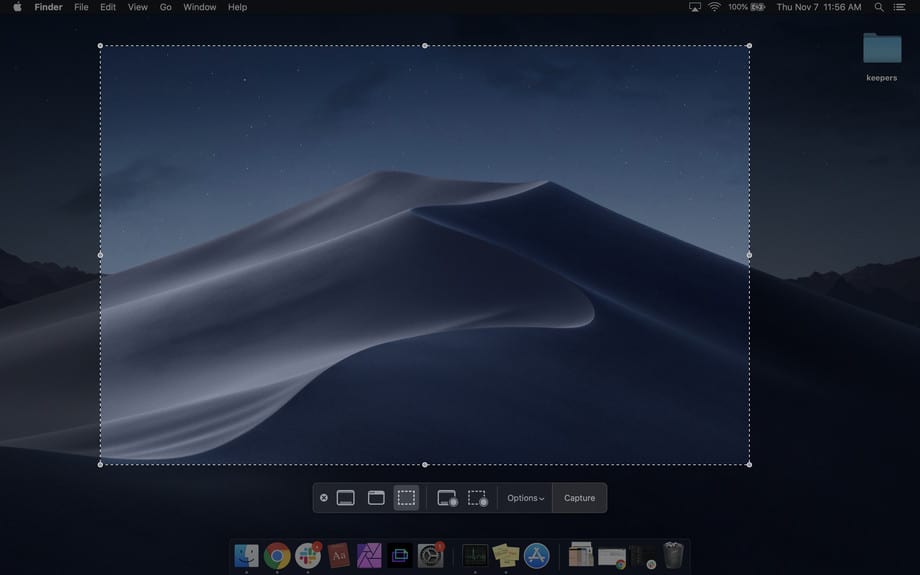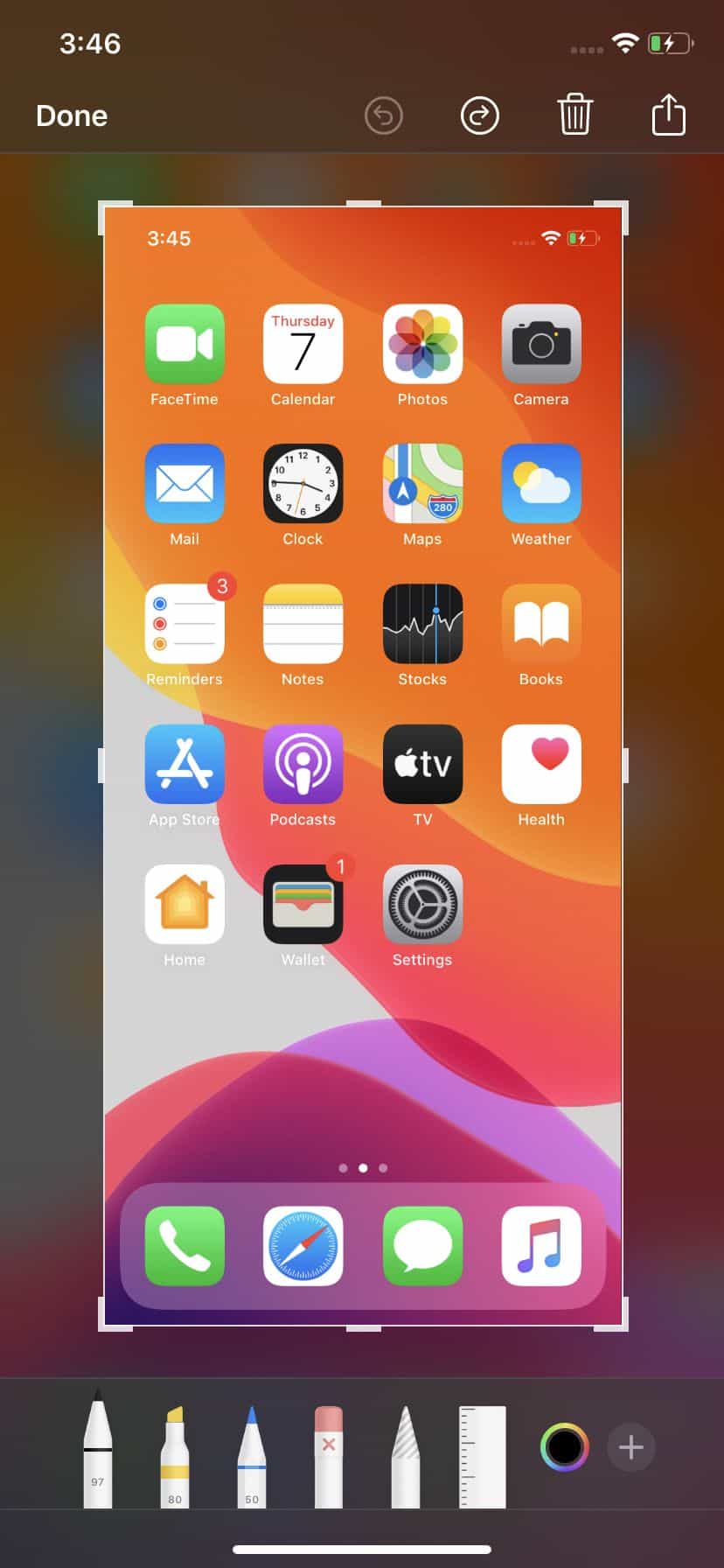Screenshots can be very important sometimes. They can be used to teach your old parents how to use a new application, send an image of a particular error message to your company’s IT department, or to snap tweets before they vanish. In this article, you will learn how to take screenshots on MAC, iPhone and Android Phone.
How Can I Take Screenshots On A Mac?
Present versions (Mojave and Catalina) of the macOS have a Screenshot application. You can access it by pressing Shift-Command (?)-5. You will be able to capture a screenshot of the screen, a window, or a particular selection; you can even capture a clip of all or some parts of your screen.

If you are yet to upgrade to Mojave or Catalina, screenshots can be saved on your desktop as PNG files. Here is how:
Must Read: 8 Best macOS Apps for Working Remotely
- To capture a screenshot of the full screen, press Shift-Command-3.
- To capture a screenshot of part of the screen, press Shift-Command-4 and then drag the cursor to outline the area you wish to capture.
- To capture a particular window, press Shift-Command-4. Hit the spacebar. The cursor will become a camera. Hover the cursor over the window you wish to capture till it highlights, then taps it.
How Can I Take Screenshots On An Android Device?
There are 2 ways to capture a screenshot on my Android screen. If it is an Android 9 or 10, just:
Must Read: How To Hide My Private Photos on Android Devices
- Press and hold your power button. A pop-up window would be visible with icons that allow you to power off, restart, call an emergency number, or take a screenshot.
- Hold down the power button and press the volume-down button.
To see all your past screenshots:
- Head to your Photos app.
- Click on the 3 parallel lines in the top left corner.
- Choose “Device folders” > “Screenshots.”
How Can I Take Screenshots On My iPhone?
Doing this is easy and straightforward. Just:
Must Read: How To Type Swear Words Easily On Your iPhone
- Press the side button and the volume-up button at the same time.
- A thumbnail image of your screenshot would be seen instantly.
- Click on the image to make it appear bigger. You will see editing tools. Icons in the upper right corner will also aid you to delete or share it.
- When you are done, click “Done” in the upper left corner. The image can be saved to Photos, to Files and can also be deleted.

More Information On A Mac
The Macintosh is a family of personal computers designed, manufactured and sold by Apple Inc. since January 1984.
The original Macintosh was the first mass-market personal computer that featured a graphical user interface, built-in screen, and mouse. (Although the Sinclair QL became available one month before the Macintosh family and thus was technically the first home computer with a graphical user interface, the QL never attained widespread commercial success.) Apple sold the Macintosh alongside its popular Apple II family of computers for almost ten years before they were discontinued in 1993.
Early Macintosh models were expensive, hindering its competitiveness in a market dominated by the Commodore 64 for consumers, as well as the IBM Personal Computer and its accompanying clone market for businesses. Macintosh systems found success in education and desktop publishing and kept Apple as the second-largest PC manufacturer for the next decade.
In the early 1990s, Apple introduced the Macintosh LC II and Color Classic which were price-competitive with Wintel machines at the time. However, the introduction of Windows 3.1 and Intel’s Pentium processor which beat the Motorola 68040 in most benchmarks gradually took market share from Apple, and by the end of 1994 Apple was relegated to third place as Compaq became the top PC manufacturer.
Even after the transition to the superior PowerPC-based Power Macintosh line in the mid-1990s, the falling prices of commodity PC components, poor inventory management with the Macintosh Performa, and the release of Windows 95 saw the Macintosh user base decline.
Prompted by the returning Steve Jobs’ belief that the Macintosh line had become too complex, Apple consolidated nearly twenty models in mid-1997 (including models made for specific regions) down to four in mid-1999: The Power Macintosh G3, iMac, 14.1″ PowerBook G3, and 12″ iBook.
All four products were critically and commercially successful due to their high performance, competitive prices and aesthetic designs, and helped return Apple to profitability. Around this time, Apple phased out the Macintosh name in favor of “Mac”, a nickname that had been in common use since the development of the first model. Since their transition to Intel processors in 2006, the complete lineup is Intel-based.
Its current lineup includes four desktops (the all-in-one iMac and iMac Pro, and the desktop Mac Mini and Mac Pro), and two laptops (the MacBook Air and MacBook Pro). Its Xserve server was discontinued in 2011 in favor of the Mac Mini and Mac Pro.
Apple has also developed a series of Macintosh operating systems. The first versions initially had no name but came to be known as the “Macintosh System Software” in 1988, “Mac OS” in 1997 with the release of Mac OS 7.6, and retrospectively called “Classic Mac OS”. In 2001, Apple released Mac OS X, a modern Unix-based operating system which was later rebranded to simply OS X in 2012, and then macOS in 2016.
The current version is macOS Mojave, released on September 24, 2018. Intel-based Macs are capable of running non-Apple operating systems such as Linux, OpenBSD, and Microsoft Windows with the aid of Boot Camp or third-party software. Apple also produced a Unix-based operating system for the Macintosh called A/UX from 1988 to 1995, which closely resembled contemporary versions of the Macintosh system software.
Apple does not license macOS for use on non-Apple computers, however, System 7 was licensed to various companies through Apple’s Macintosh clone program from 1995 to 1997. Only one company, UMAX Technologies was legally licensed to ship clones running Mac OS 8. Since Apple’s transition to Intel processors, there is a sizeable community around the world that specializes in hacking macOS to run on non-Apple computers, which are called “Hackintoshes”.
There you have it – a comprehensive tutorial on how to take screenshots on MAC, iPhone and Android devices. If you have any questions as regards this tutorial, feel free to drop them in the comment section below.



